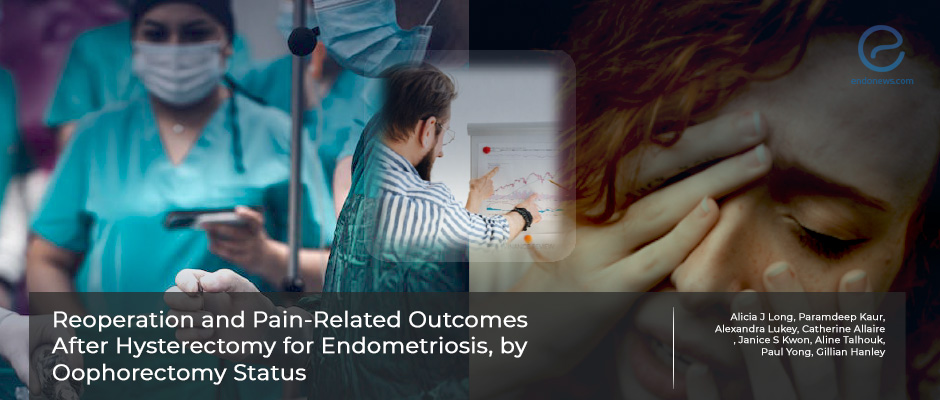To Remove the Ovary(ies) or Not During Hysterectomy for Endometriosis
Sep 23, 2022
Pelvic pain after hysterectomy for endometriosis may not significantly differ based on ovarian conservation status.
Key Points
Highlights:
- Although the addition of bilateral oophorectomy resulted in a lower reoperation rate compared to hysterectomy, there was little difference between the groups for the secondary outcomes such as physician visits for endometriosis and pelvic pain, opioid or hormonal suppression medication usage.
Importance:
- Persistent pelvic pain after hysterectomy for endometriosis may not differ significantly based on ovarian conservation status.
What's done here:
- This is a population-based retrospective cohort study including 4489 patients, who underwent hysterectomy for endometriosis between 2001 to 2016.
- Patients are classified by hysterectomy alone, hysterectomy with unilateral salpingo-oophorectomy, or hysterectomy with bilateral salpingo-oophorectomy.
- The reoperation rate was the primary outcome, and the physician visits for endometriosis and pelvic pain, the use of postoperative prescriptions such as opioids, hormones, and hormonal suppression were also measured.
Key Results:
- The reoperation rate was low across all groups, 89,5% of the patients had not been reoperated at the end of the follow-up (median 10 years).
- Patients who underwent hysterectomy with bilateral salpingo-oophorectomy had a lower reoperation rate when compared to other cohorts.
- Hysterectomy with a unilateral salpingo-oophorectomy cohort had slightly higher rates of use of hormonal suppressive when compared to the other two cohorts.
- All groups had similar rates of physician visits for endometriosis or pelvic pain and the number of days of opioid prescriptions.
Lay Summary
Some surgeons prefer empiric bilateral salpingo-oophorectomy during the hysterectomy of women with endometriosis based on the knowledge that endometriosis is stimulated by endogenous estrogens, as leaving the ovaries in situ may increase the possibility of endometriosis recurrence and pelvic pain. However, the cause of pelvic pain is multifactorial and complex to deal with.
A rather low reoperation rate was reported in hysterectomy with bilateral oophorectomy compared to the operation with preserved ovaries. On the other hand, after oophorectomy, premature surgical menopause occurs and the risk of cardiovascular events, osteoporosis, and even premature mortality risks may arise. These risks could be partially attenuated with the use of hormonal replacement therapy.
To compare the outcomes of hysterectomies with or without ovaries during endometriosis surgery, Long et al. from the Department of Gynecology and Obstetrics of the University of British Colombia, Vancouver, Canada, evaluated 4489 women based on the reoperation rate and the physician visits after 3-12 months and 1-5 years.
Although the patients who underwent hysterectomy with bilateral salpingo-oophorectomy had a lower reoperation rate when compared to other cohorts, the authors reported a low and almost similar reoperation rate in all cohorts. The indication for reoperation of patients with conservated ovaries was most commonly adhesiolysis and oophorectomy.
The authors concluded about the need for more studies on comparing the hysterectomy outcomes of patients with or without the conservation of ovaries.
This interesting article was recently published in the "American Journal of Obstetrics and Gynecology".
Research Source: https://pubmed.ncbi.nlm.nih.gov/36029832/
hysterectomy oopherectomy reoperation pain management pelvic pain opioids hormon replacement therapy hormonal supression endometriosis.

